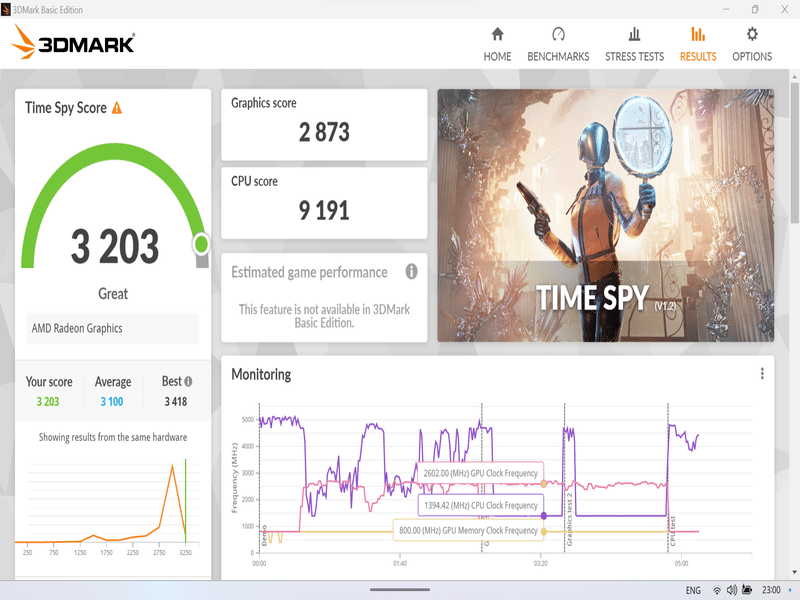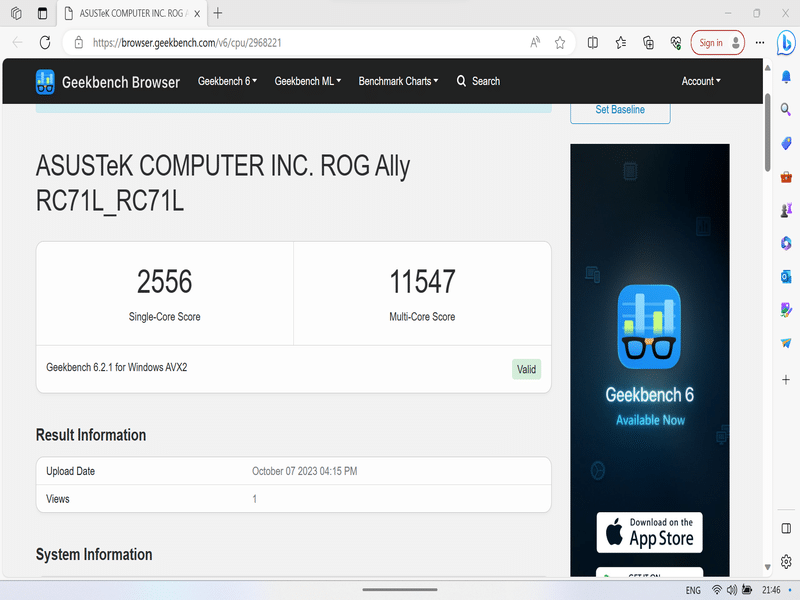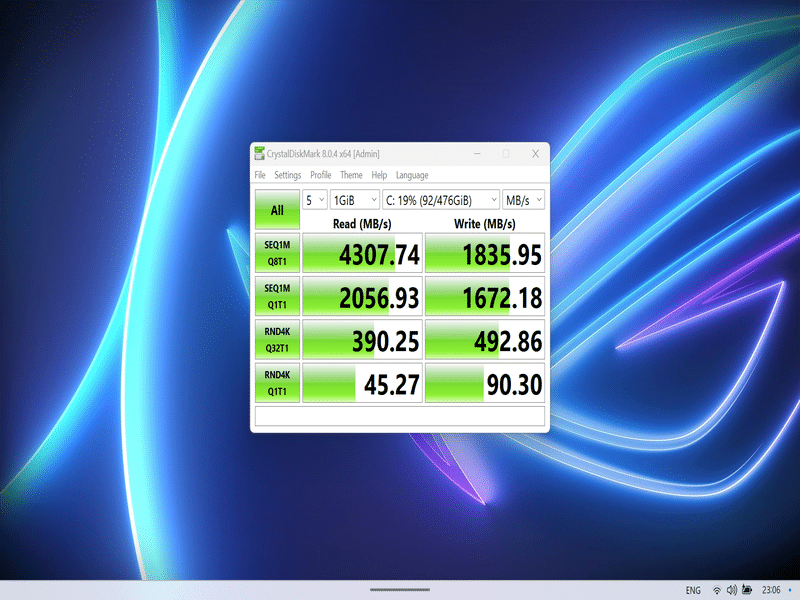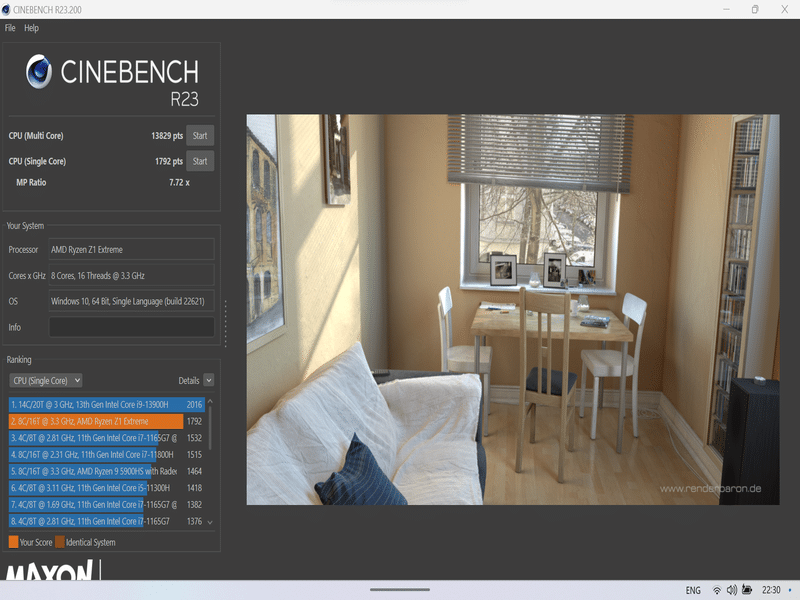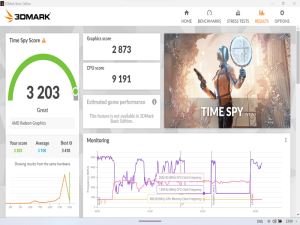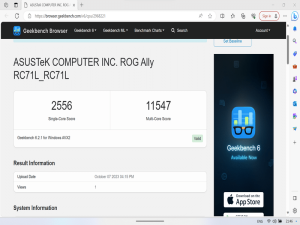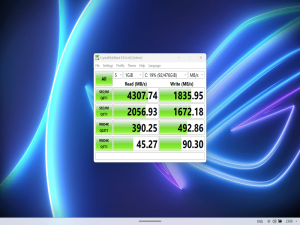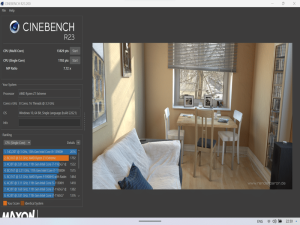Highlights
- Packed with an AMD Ryzen Z1 Extreme Processor
- Crisp 7-inch, 1080p 120Hz IPS display for immersive gaming
- Native Windows 11 experience with joystick and touchscreen controls
- Competitive pricing at Rs 67,990 on Flipkart for Indian users
The handheld gaming scene is buzzing, especially after the introduction of the Steam Deck.
Riding this wave, Asus has unveiled its contender, the ROG Ally.
What sets it apart from the likes of Steam Deck are some notable features: a robust Ryzen Z1 processor, a crisp 120Hz IPS 1080p display, and seamless support for Windows.
Priced at Rs 67,990 on Flipkart in India, does the ROG Ally herald the next era of handheld gaming in the nation? Dive into our review to find out.
Asus ROG Ally: Key Specs
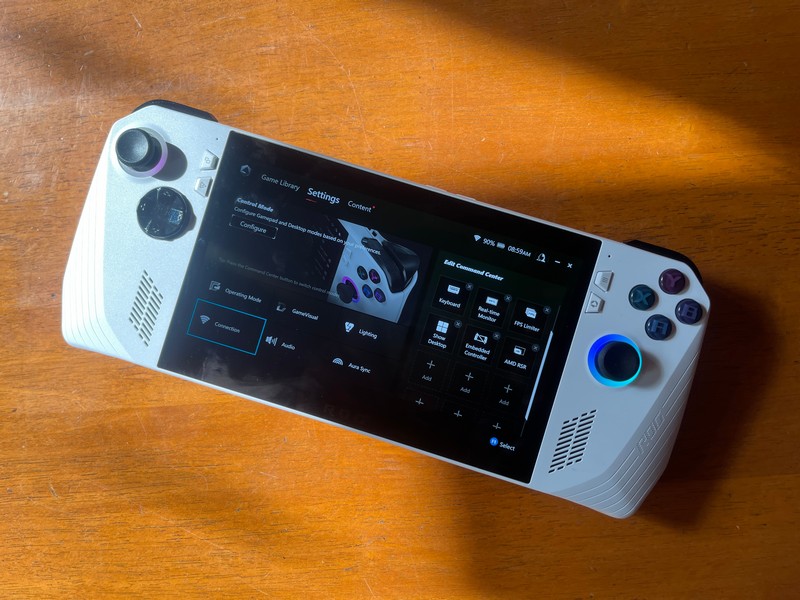
- AMD Ryzen Z1 Extreme Processor (4nm process, 8-core /16-threads, 24MB total cache)
- AMD Radeon Graphics
- 7-inch, 16:9 1080p 120Hz IPS display
- 16GB LPDDR5 (6400MT/s dual channel)
- 512GB PCIe 4.0 NVMe M.2 SSD
- 40WHrs, 4S1P, 4-cell Li-ion battery
Asus ROG Ally: Pros and Cons
| Pros | Cons |
| Crisp Display | Software Experience Could Be Better |
| Robust Performance | Battery life is not optimal |
| Sleek Design |
Asus ROG Ally: Build, Design, and Display
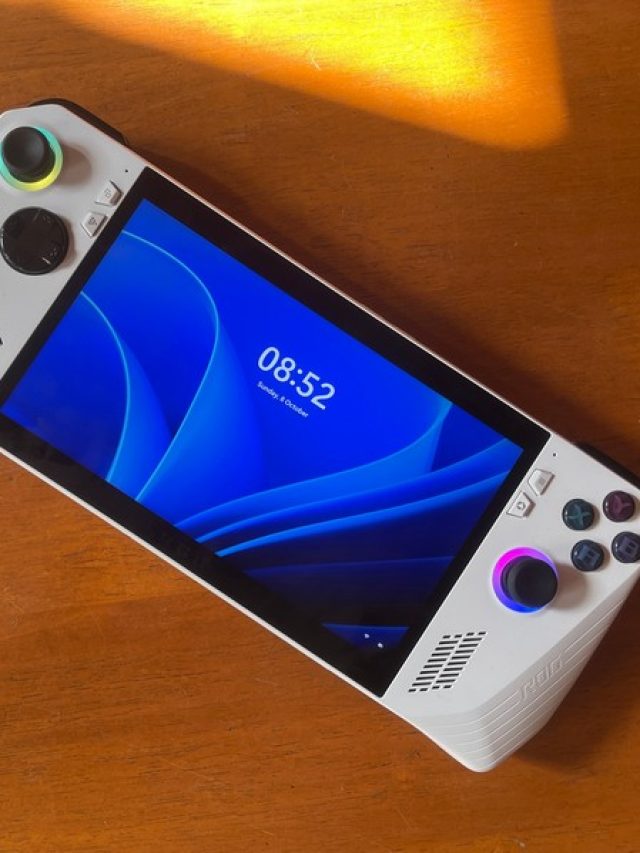
The ROG Ally stands out as a prominent handheld device, showcasing a significant size, although not quite reaching the dimensions of the Steam Deck.
It’s certainly larger than the Nintendo Switch.
Packed within its frame are robust internals, including efficient thermal output fans.
Weighing around 600g, extended usage did make its presence felt, slightly straining our hands over time – a not-so-uncommon concern for gadgets of this heft.
Built with unwavering rigidity, the ROG Ally’s plastic construction doesn’t exhibit any noticeable flex, indicative of its superior build quality.
Its display boasts a 7-inch, 16:9 1080p 120Hz IPS panel.
While the screen delivers sharp visuals, the bezel framing it could have benefited from a sleeker design.
Enhancing the gaming aesthetic, the device features RGB-lit joysticks managed by Aura Sync.
Additionally, standard gaming buttons and arrow keys find their place symmetrically on either side of the screen.
Asus ROG Ally: Connectivity and Software
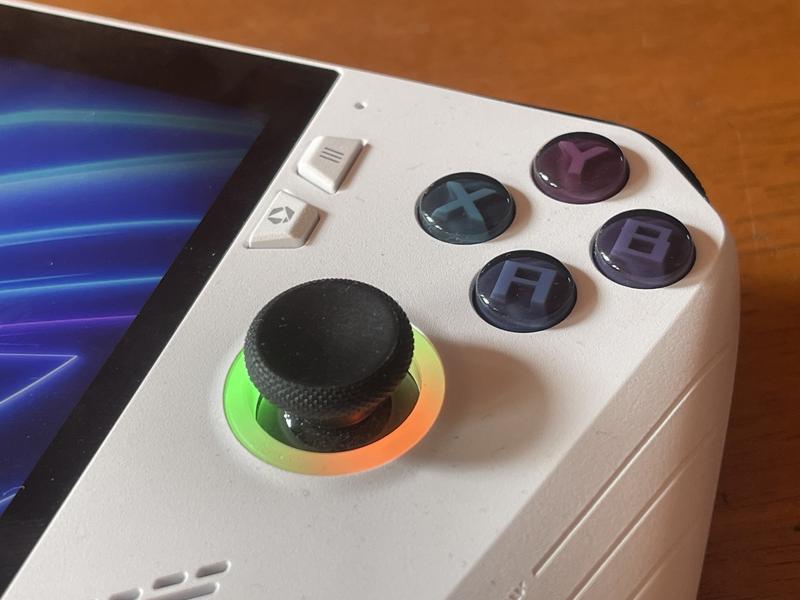
A range of ports and slots are neatly lined along the device’s top, including a headphone jack, an XG-Mobile port for eGPU connectivity, a USB-C port, and a microSD card slot.
Adding to the device’s functionality, two additional buttons are located on its rear, providing extra control.
Notably, the power button doubles up with an integrated fingerprint sensor.
And for quick access to the gaming interface and settings, dedicated buttons for the Armory Crate app and options menu are thoughtfully included.
The ROG Ally handheld delves deep into the realm of software experiences, serving a medley of impressive feats paired with some challenges.
Powered by a mobile version of Windows 11, the device offers cursor control through its joystick.
Additionally, its touchscreen capability provides an interactive layer, enabling users to interact with the UI elements.
But this integration isn’t without its hiccups. The expansive display spreads the keyboard across its span, making typing a tad unwieldy.
Asus has engineered the ROG Ally to support a passive stylus.
For users seeking smoother navigation, investing in one might prove beneficial.
Still, it’s worth noting that the touchscreen responsiveness on Windows 11 doesn’t rival the intuitive experience of conventional tablets.
Interestingly, in contrast, the Steam Deck employs a Linux UI that’s inherently more resource-efficient, delivering a more streamlined interface.
Adding to the ROG Ally’s arsenal is the custom mapping feature, available for both desktop and gaming modes, ensuring a more tailored user experience.
Asus ROG Ally: Performance and Gaming
The ROG Ally’s prowess predominantly lies in its performance metrics.
Powered by an AMD Ryzen Z1 Extreme Processor built on a 4nm process, the device boasts 8 cores with 16 threads and a generous 24MB total cache.
Complementing its CPU is the AMD Radeon Graphics, enhancing its gaming capabilities.
Delving into the specifics of the ROG Ally’s performance, it’s a blend of remarkable achievements intertwined with certain nuances, particularly when considering the device’s compact stature.
The 1080p display, although sharp, can sometimes stretch the device’s capabilities, especially when there are heightened demands on the CPU and GPU during intensive gaming scenarios.
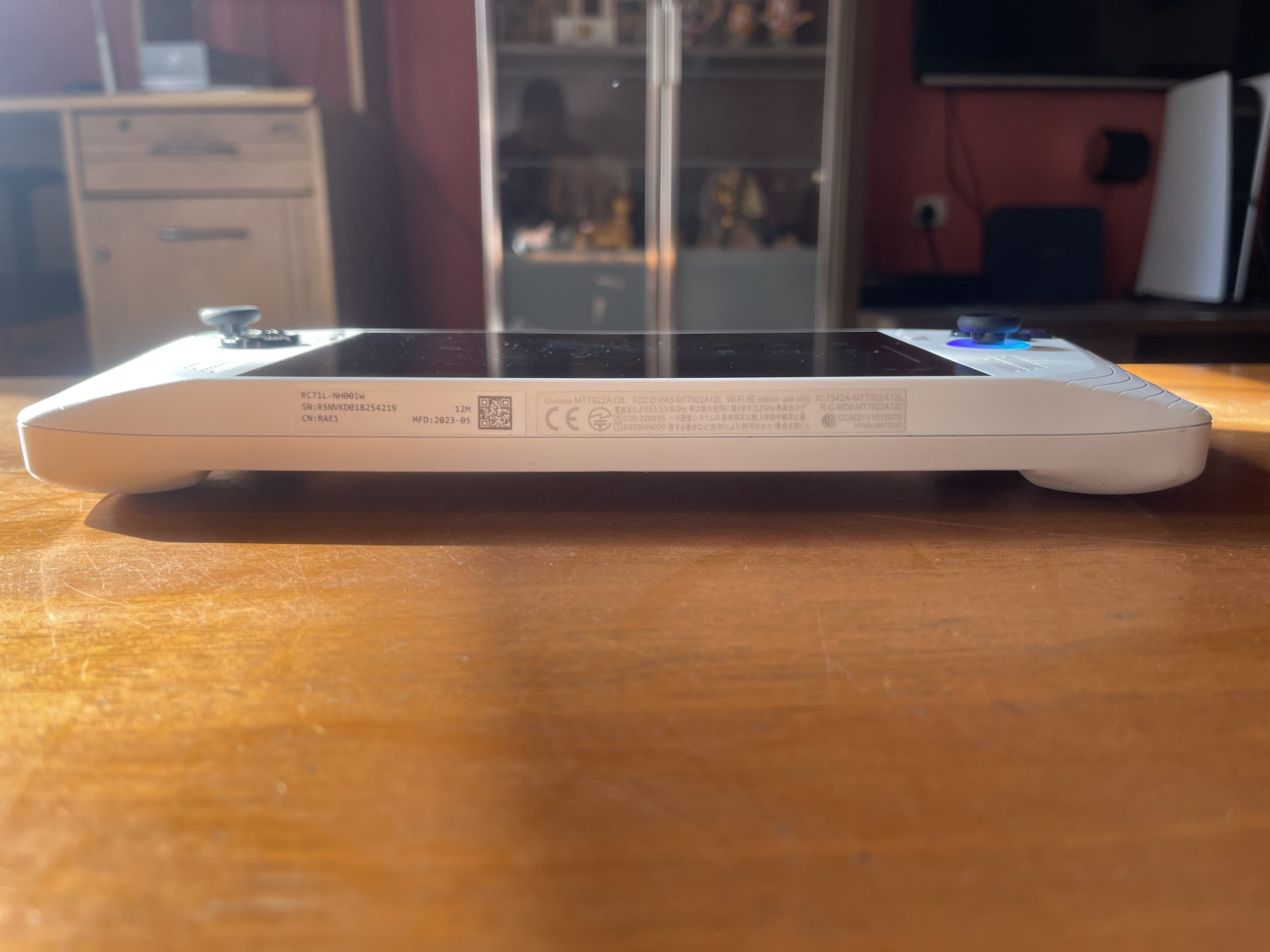
Despite these challenges, the Ally’s benchmark results paint a rather favourable picture.
It showcases an impressive performance that’s eerily close to the capabilities of the 12th-gen H series CPUs, indicating a commendable level of optimization for a handheld.
The ROG Ally further strengthens its performance stance with an impressive memory and storage configuration.
It boasts 16GB of LPDDR5 onboard memory, clocked at a speedy 6400MT/s in a dual-channel setup.
For storage needs, the device incorporates a generous 512GB PCIe 4.0 NVMe M.2 SSD, ensuring swift data access and ample space for a rich gaming library.
We benchmarked the storage on CrystalDiskMark and the results were quite promising.
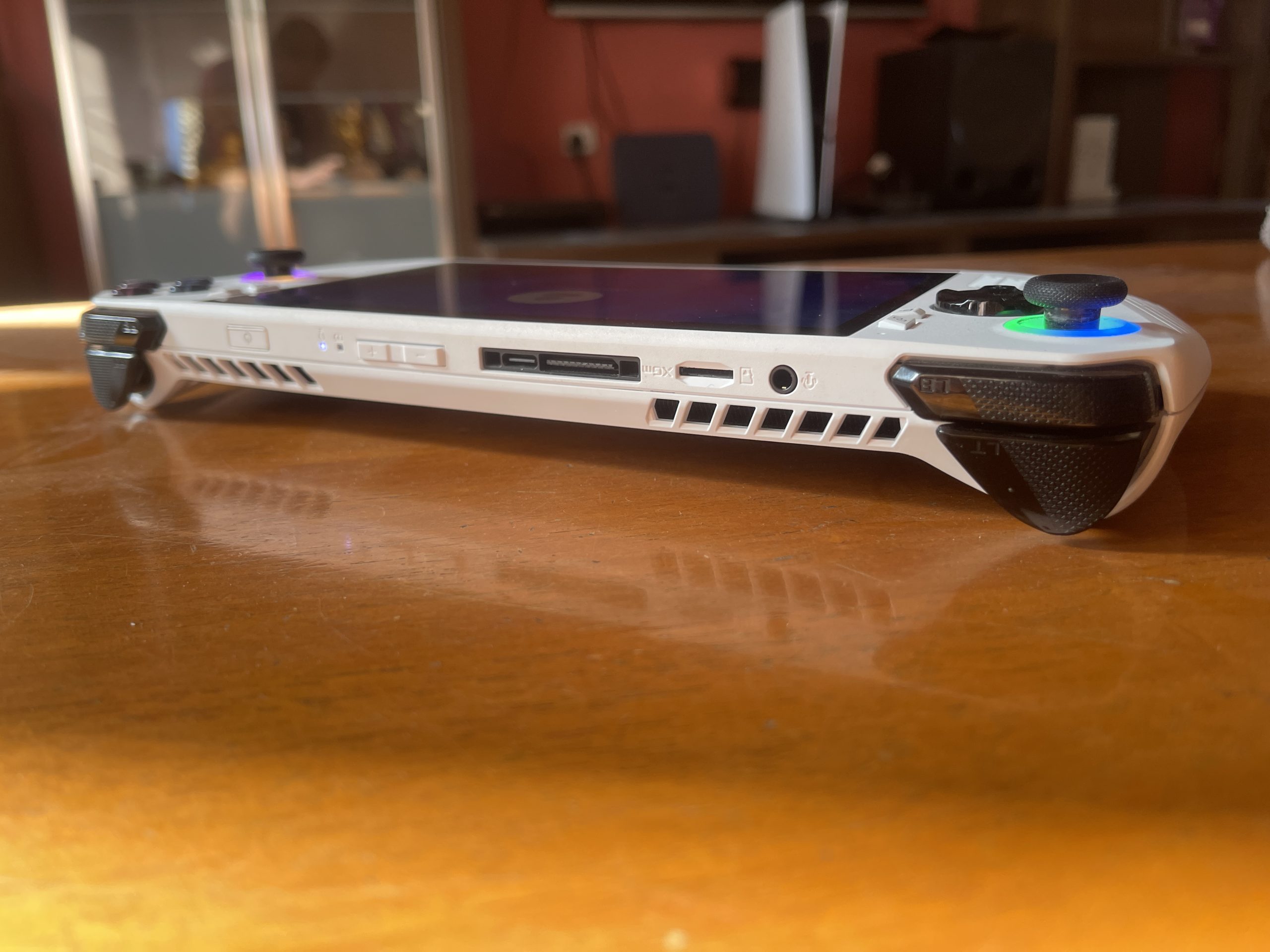
Graphically, the ROG Ally doesn’t disappoint. Our tests with “God of War” at the ‘Optimised’ settings, which seems tailor-made for handhelds, delivered an average of 45fps – satisfactory for most gaming enthusiasts.
Popular titles like “Counter-Strike 2” and “Call of Duty: Warzone 2″ achieved about 150fps and 90fps respectively at high settings.
However, with demanding AAA titles such as “Cyberpunk 2077,” there was a noticeable dip to around 40fps.
This suggests that while the device can handle most games admirably, frame rate consistency might waver with more resource-intensive ones.
And yes, during such sessions, be prepared to hear the fans roar.
They can get rather loud, and we suggest using earphones for an immersive experience.
Under high gaming stress, particularly in the 25W/30W mode, the device tends to heat up, reaching temperatures around 95 degrees.
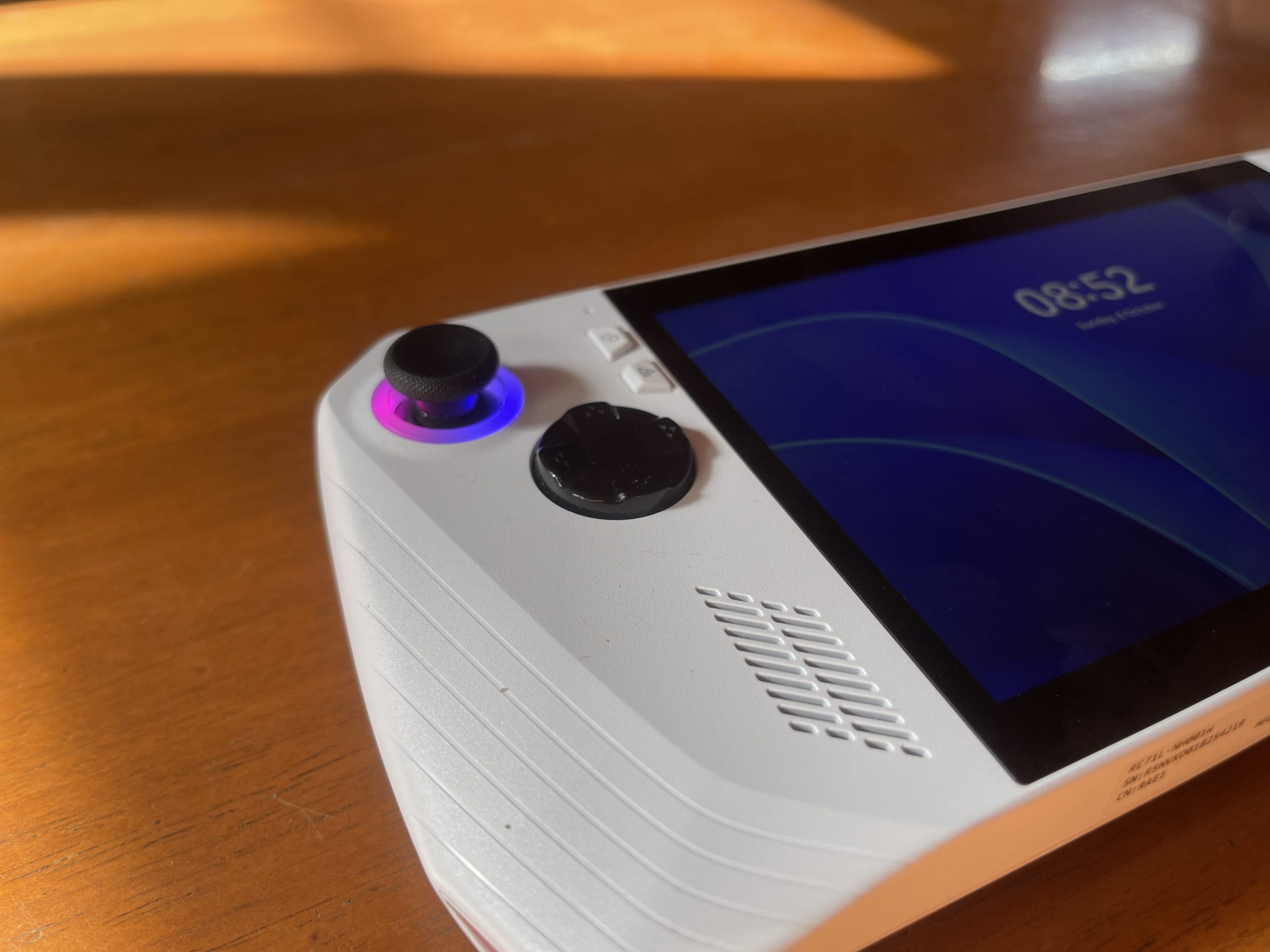
However, it doesn’t cross the threshold into discomfort as frequently as one might anticipate.
To round off the gaming experience, the ROG Ally is equipped with dual speakers.
While they won’t blow your mind, they’re sufficiently competent for standard media playback and gaming sessions.
But again for those craving a richer audio experience, external headphones or speakers might be the way to go.
Asus ROG Ally: Battery
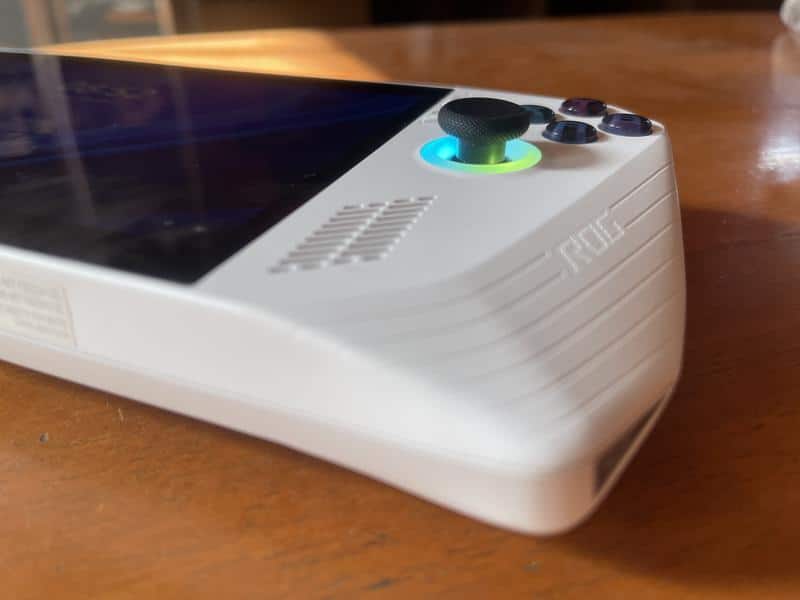
In the realm of handheld gaming devices, battery life plays an indispensable role.
Unfortunately, the ROG Ally doesn’t quite hit the mark in this domain.
The device is powered by a 40WHrs, 4S1P, 4-cell Li-ion battery, offering users the flexibility to shuffle between 10W, 15W, and 25W modes based on their specific needs.
Despite this adjustable power management system, the Ally’s battery performance is somewhat underwhelming.
On a mixed-use basis, it manages to last around 5 hours.
However, when subjected to intense gaming, the battery’s stamina significantly drops, running out in approximately an hour.
This rapid drain somewhat negates the notion of a truly ‘portable‘ handheld device, as gamers might expect longer play durations without constantly seeking a power outlet.
Final Verdict
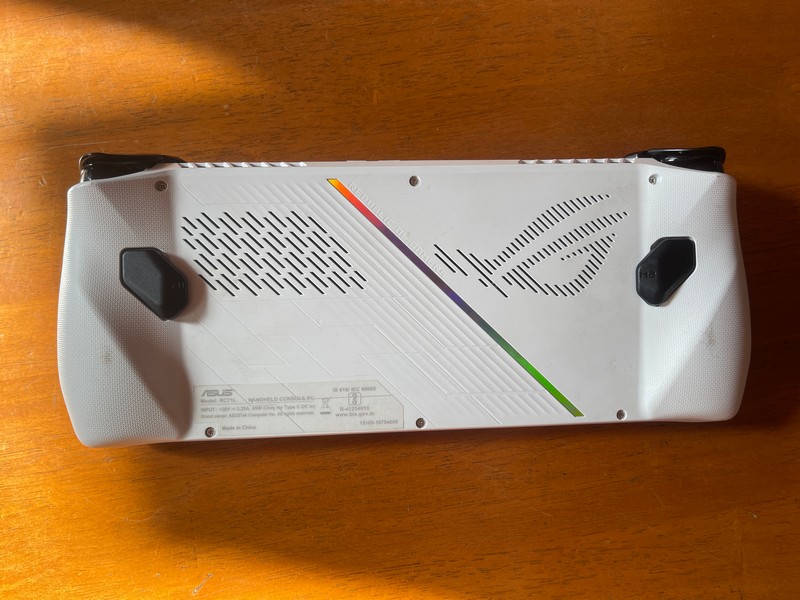
The Asus ROG Ally, while flaunting some exceptional specs and promising features, does find itself amidst a few challenges.
Its performance credentials are commendable, but certain nuances like inconsistent frame rates with AAA titles and subpar battery life in intensive gaming sessions might deter some potential users.
However, for those seeking a Windows-native handheld gaming experience with impressive internals, the ROG Ally might still present itself as an attractive option, especially when compared to its contemporaries.
FAQs
What sets the Asus ROG Ally apart from other handheld gaming devices?
The ROG Ally boasts a Ryzen Z1 processor, 120Hz IPS display, and runs natively on Windows 11, differentiating itself from competitors.
How does the ROG Ally fare in terms of performance?
The device delivers commendable performance, closely matching the capabilities of 12th-gen H series CPUs, although FPS can be inconsistent for some AAA titles.
Is the battery life on the ROG Ally sufficient for extended gaming?
With intensive gaming, the battery might drain in approximately an hour, making it a potential concern for prolonged gaming sessions.
How is the display experience on the ROG Ally?
It offers a 7-inch, 1080p 120Hz IPS display, delivering sharp visuals, although the bezels could have been trimmer.

